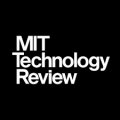
In late 2007, less than 10 years into the company’s existence, Google came out swinging on the clean energy front. To a fanfare of plaudits up and down Silicon Valley and well beyond, it declared “RE<C” as its goal: make renewable energy cheaper than coal. The company invested tens of millions of dollars into R&D efforts from concentrated solar power to hydrothermal drilling. Four years later, those efforts had been scrapped.
It would be all too easy to see this as an admission of failure—big tech playing in an arena it knew nothing about, with the hubris that Silicon Valley is known for. But something else was going on. Google’s shift in strategy was a reflection of the growing success of the solar sector. Google realized its energies were better directed toward massively scaling up existing renewable technologies that had plummeted in price, rather than inventing new ones.
While Google nailed the switch from R&D to deployment, it arguably still bet big on scaling up the wrong technology. In the early 2010s, the solar race looked like a tight competition between solar photovoltaic (PV) and utility-scale concentrated solar power (CSP), which uses sun-heated fluids to drive power turbines. Google quickly invested more than $1 billion in a slew of renewables companies and utilities, including big investments in CSP outfits BrightSource Energy and eSolar. A decade later, such choices aren’t looking promising, as CSP, too, has been losing out to PV’s continuing rapid cost declines, writes Gernot Wagner for the MIT Technology Review.
Read the full article at: https://www.technologyreview.com/2021/06/30/1026507/cheap-solar-pv-google-clean-energy/
Image Credits: Andrea Daquino





